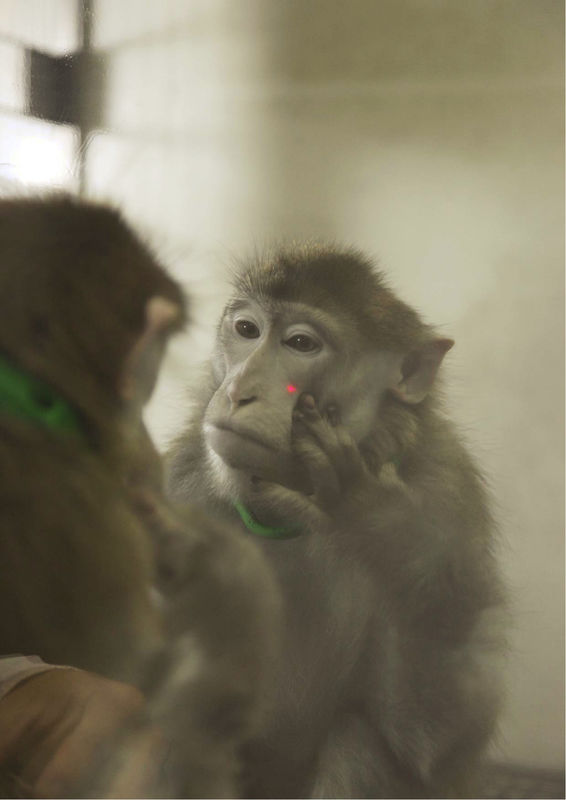By Will Dunham
WASHINGTON (Reuters) - By about age 2, people can recognize their own reflections in a mirror. Great apes including chimpanzees, orangutans, bonobos and gorillas also have exhibited this key indicator of intelligence. But monkeys? Not so much.
Monkeys have consistently failed to display self-recognition in mirror experiments. But new research by Chinese scientists that underscores the simian capacity for learning showed that rhesus monkeys can be taught to recognize that the face staring back at them from the mirror is their own.
In a standard mirror test, a dye spot is placed on the subject's face that can be seen only by looking at a mirror. Subjects pass the test if they touch the spot after seeing themselves in the mirror, indicating they know the reflection is theirs.
"Mirror self-recognition is an indication of self-awareness, which is a hallmark of higher intelligence in humans," said neuroscientist Neng Gong of the Chinese Academy of Sciences in Shanghai, who led the study published on Thursday in the journal Current Biology.
"Monkeys normally cannot recognize themselves in the mirror, presumably due to the lack of capability in self-awareness," Gong added. "Here, we showed that monkeys can actually learn to acquire this capability by training, suggesting that the monkey brain has the basic 'hardware' but needs appropriate training to acquire the 'software' to achieve self-recognition."
The monkeys were placed in front of a mirror. A visible red light dot was then projected on various face locations using a laser device powerful enough to cause the monkeys a sensation of irritation.
They almost invariably touched the place where the red dot had appeared and the laser had caused irritation, and were rewarded with food for doing so.
The procedure was then repeated using a lower-power laser that did not cause irritation but still projected a red dot. When the monkeys looking in the mirror touched the dot despite not experiencing the irritation, they were rewarded with food.
After two to five weeks of training, the monkeys had learned to touch a laser dot or a dye mark on the face while looking in the mirror, indicating self-recognition.
Gong noted that mirror self-recognition is lost in some people with brain disorders including autism, schizophrenia, Alzheimer's disease and mental retardation.

"Although the impairment of self-recognition in patients implies the existence of cognitive and neurological deficits in self-processing brain mechanisms, our finding raised the possibility that such deficits might be remedied via training," Gong said.